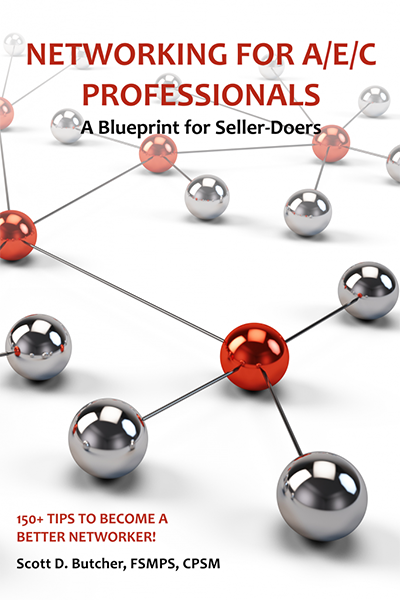One of the single most important skills required for any professional, especially those engaged with business development, is networking. This is a pretty big swath of employees at our firms – principals, project managers, department managers, construction managers, site superintendents, lead architects, lead engineers, surveyors, scientists, and the list goes on.
Anyone who is client-facing, even if only for short periods of time, needs to understanding networking. In fact, this applies to anyone who attends project meetings, meets with vendors, belongs to professional or client organizations, goes to service club events, participates in nonprofits … well, it’s a pretty extensive list. To that you could even add “interacts with coworkers!” Does that leave anyone?
And yet, networking is a skill that is largely overlooked by colleges and trade schools, and few employers provide any sort of networking training for their staff. In fact, a recent study by the Society for Marketing Professional Services (Sell. Win. Do Business. How A/E/C Firms Are Using Staff to Win More Work) found that only about a third of firms in our industry provide any type of business development training to their seller-doers (much less the overall staff). Furthermore, the research revealed that the most requested topic for training is “Getting the most from client organizations” while the fifth most requested topic is “Networking best practices.”
It sounds like there’s a need for companies to train their staff in networking skills!
It was a need I identified at JDB Engineering several years ago. I brought in the “outside expert” (my friend Bill Long, PE, LEED AP, FSMPS of P. Agnes) to educate our team about what networks are, where to find them, and offer some general networking recommendations. The program was so well received that a follow-on was requested: what to actually do when in a networking environment!
I created a sequel to Bill’s program, and really went into the nuts and bolts of what to do before a networking program, bringing stories to share and questions to ask, ideas and techniques to meet people during a program – from introducing yourself to joining conversations to ending conversations,and pretty much everything in between. The program also included thoughts on how to determine if someone should be in your network and the importance of follow-up after an event. Finally, it ended with a CRM discussion as well as ideas for cultivating (and pruning) your network. I was fortunate to be invited to give the program to several engineering groups, and an idea for a book was born.
Today, 23,000 words and 150 tips later, the book is available and free for all! Networking for A/E/C Professionals: A Guide for Seller-Doers can be accessed and downloaded here. It’s not just for seller-doers, but rather anyone who needs to elevate their networking skills (read: all of us), from facilities managers to recent college grads to technical professionals.
There’s no cost to download a copy, and it’s not hidden behind a wall. Please share the link with your colleagues who could benefit from better networking skills.
Enjoy!
Connect with Me
LinkedIn: www.linkedin.com/in/scottdbutcher
Twitter: www.twitter.com/scottdbutcher


